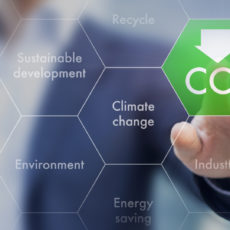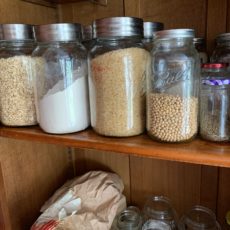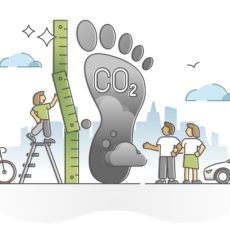This week we look at some of the basic information that everyone should understand in order to transition to a sustainable lifestyle.
Read moresustainable living
Climate Science: What is a Sustainable Carbon Footprint?

This week we put a value on living sustainably that we all should be striving to achieve, and give some guidance as to what contributes to that value.
Read more6 Sustainability Certifications To Know

It seems that these days, green is the new black and all kinds of businesses are vying to be the most stylish and in-season. But painting a label a grassy shade of green and calling a product “all natural” doesn’t actually make it so. So, how is a sustainability-minded consumer supposed to know which products are what they say they are?
Read moreFarming Part 2: Sustainable and Regenerative Agriculture

Last week we discussed some of the problems with industrial agriculture. As the name implies, it’s all about doing things on a bigger scale, to obtain more of the thing we need: food. On the other hand, sustainable farming draws on a variety of different techniques, and its goal is to produce long-term crops while having minimal effects on the environment, and using resources more efficiently. But there’s a step even further, which is, arguably, what we should be aiming for, and that’s regenerative agriculture.
Read moreFarming: The Good and the Bad Part 1

Today is part one in a 2 part mini-series on agriculture. We’ll be exploring the old and industrial methods versus the new and regenerative methods of food production, to see which route we should be taking into the future. So come with us down to the farm and learn about these different approaches aiming for the same outcome – food production and profit.
Read moreZero Waste Pantry: How to Save on Groceries & Eat Well

Zero waste is a way of living without polluting the planet. The goal is essentially to leave no trace — creating no garbage as you go about your daily activities.
Read morePhosphorus and Sustainability: Ingredients Needed for Life

Life as we know it literally cannot exist without phosphorus. However, indications are that phosphorus demand could outstrip supply this century if no fundamental changes are made to our current trajectory of use.
Read moreSustainable Living, Carbon Footprint, and the Vegan Diet

Today, we’re talking about sustainability and the vegan diet: Is excluding all animal products, from both land and sea, truly sustainable? The answer is a little more complex than just a simple yes or no.
Read moreEasy Low Carb(on) Footprint Cooking for a Sustainable Lifestyle

Today, we wanted to share another one of our favorite low carbon footprint recipes to help you keep making your way through 2021 with sustainability on the brain–and on your table, a Vegan Nut Roast. This dish also makes an amazing Meat Free Monday staple, too!
Read moreEasy Moving Tips and Hacks for Your Most Sustainable Move

Today, we’re talking about moving. According to the US Census Bureau, almost 10% of all Americans move house in the United States every year. And that moving generates an enormous amount of waste in the form of boxes, packing materials, food waste, and assorted garbage. So what’s an eco-conscious sustainability warrior to do?
Read more
